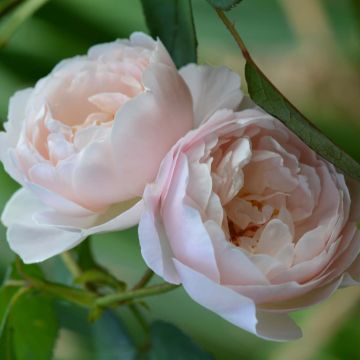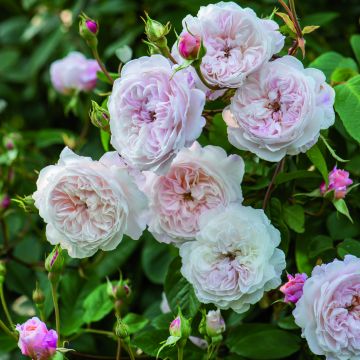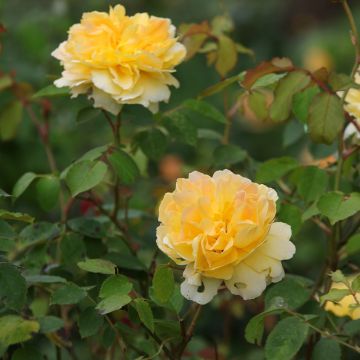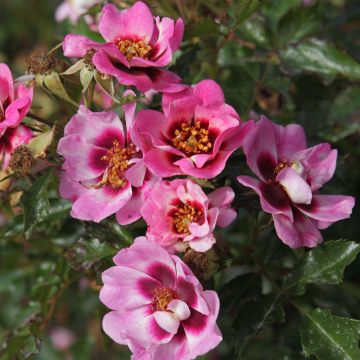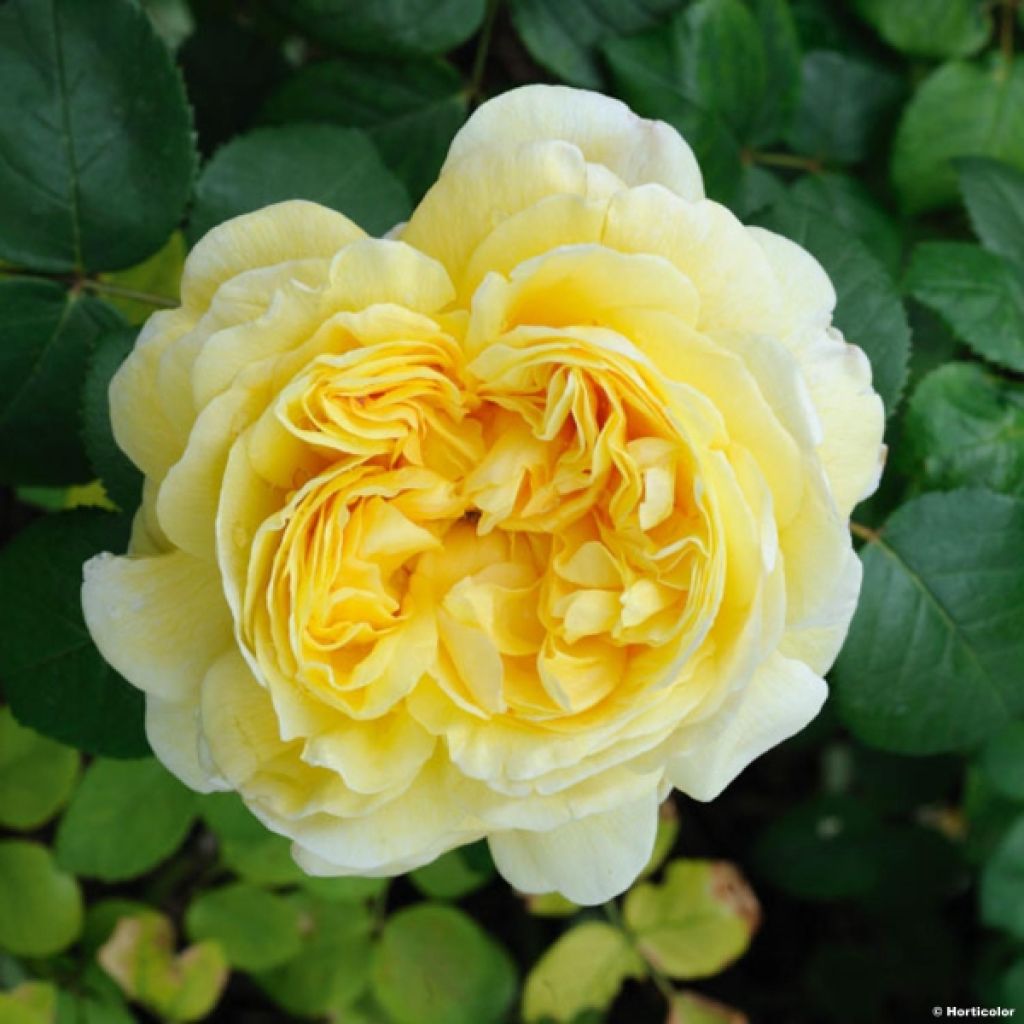

Rosa Charles Darwin- English Rose


Rosa Charles Darwin- English Rose


Rosa Charles Darwin- English Rose
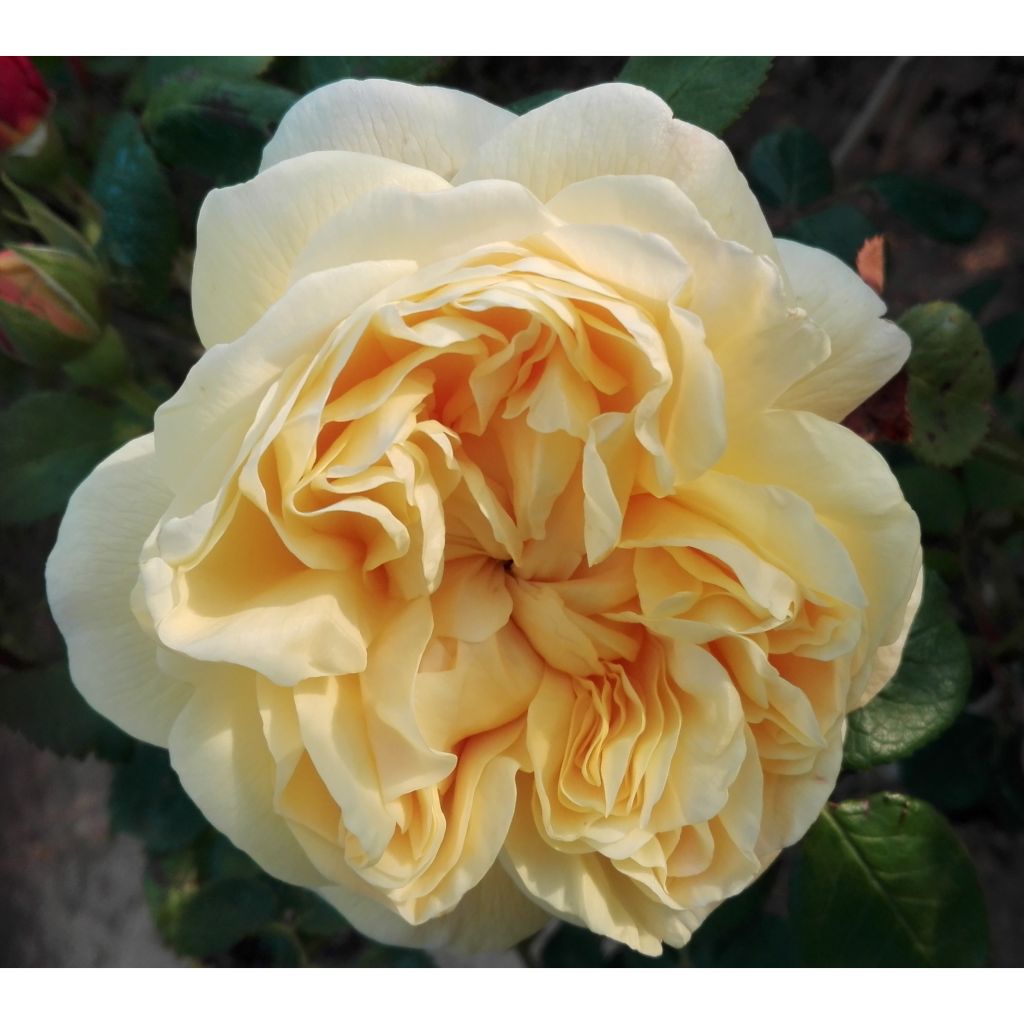

Rosa Charles Darwin- English Rose
Rosa Charles Darwin- English Rose
Rosa Charles Darwin® Auspeet
English Shrub Rose
Thank you to the individuals (for order preparation and shipment), the rose bush received appears healthy. Planted close to the 'Grace' variety, I am now patiently waiting for it to take root... (or not?).
Thierry, 20/10/2023
This item cannot be shipped to the selected country
Delivery charge from €5.90
Delivery charge from €5.90
Delivery to Corse prohibited
More information
Schedule delivery date,
and select date in basket
This plant carries a 24 months recovery warranty
More information
We guarantee the quality of our plants for a full growing cycle, and will replace at our expense any plant that fails to recover under normal climatic and planting conditions.
From €5.90 for pickup delivery and €6.90 for home delivery
Express home delivery from €8.90.
From €5.90 for pickup delivery and €6.90 for home delivery
Express home delivery from €8.90.
Delivery to Corse prohibited: UE law prohibits the import of this plant from mainland France to Corse as part of the fight against Xylella fastidiosa. Please accept our sincere apologies.
More information
Does this plant fit my garden?
Set up your Plantfit profile →
Description
The English rose Charles Darwin, a wonderful tribute to the great man of science, possesses something of the magical character of its illustrious ancestor Gloire de Dijon. There seems to be hardly enough room for all these tightly packed petals in its large, very round double flowers, which open in a colour of subtly shaded yellow champagne, tinged with pink or amber grey, varying according to the climate. It is hard to decide what to admire most, the size of the roses, their plump shape, their changing hue or their delightful scent of tea rose. If this beautiful creation by David Austin is not the most well-known, it certainly deserves to be rediscovered: far from being fussy, the plant is vigorous, reliable, easy to cultivate and rarely diseased.
The Charles Darwin rose has a slightly loose, flexible, bushy habit, becoming rather upright over the years, and produces branches strong enough to support the weight of the flowers without collapsing. Its growth is rapid: it will reach an average height of 1.20m (3 ft 11in) in a few years, with a spread of 90cm (35.4in) to 1m (3ft 4in). Like all English roses, the flowering is abundant from June until the first frost. The flowers of Charles Darwin are born from orange buds, solitary or gathered in small clusters at the end of long, slightly thorny stems. Remarkably globular at blooming, greatly resembling the cabbage rose in their architecture, they are composed of more than 40 petals that curl inward like shells, partially concealing the slightly more yellow heart. Their colour, varying according to region, is lighter in the south, with nuances of apricot and pink, while in the north the flowers are a more obvious yellow. The subtlety of this colour is actually difficult to capture in a photograph. In reality, the rose Charles Darwin evolves from the most beautiful shades of yellow to faded white, then evolves again into cream, tinged with pink. The foliage is composed of small leaflets, fairly dark green, matte, resistant to diseases under good growing conditions.
The resemblance of this rose to the watercolors of Redouté, the painter of roses, is obvious for those who contemplate its flowers. The large flowers of Charles Darwin, in lovely light shades allow for the highlighting of groups of shrubs with dark foliage such as Physocarpus, hazelnuts or Cotinus Royal Purple. As long as one loves flowers in yellow tones that never reveal their true colours, you will adore this rose full of life and surprises. English roses are beautiful planted in groups of 3 plants: they then form a mass of flowers throughout the entire season. To enhance the pastel flowers of Charles Darwin, one could plant a white rose like Winchester Cathedral, or a mauve rose like Charles de Gaulle or Blue Girl, beside it.
English roses are well-known for being repeat flowering and their flowers are renowned for being beautiful, well-formed and highly scented.
Created by David Austin in 2001
Report an error about the product description
Plant habit
Flowering
Foliage
Botanical data
Rosa
Charles Darwin® Auspeet
Rosaceae
English Shrub Rose
Cultivar or hybrid
Rosa canina Laxa (4L/5L pot, Wrapped bare root)
Other David Austin Roses
Planting and care
Plant your English Rose Charles Darwin in a sunny location. English roses are tolerant but not of excessive limestone. They will adapt to any garden as long as the soil is well-worked and rich enough. To plant your rose, work the soil by crumbling it and place a fertiliser such as fish blood and bone, at the bottom of the planting hole. Water generously after planting to remove air pockets. Water regularly for a few weeks to facilitate root growth. Pruning is essential for the flowering of bushy English roses. At the end of winter, shorten the branches to 3-5 buds above the ground (at the lowest), choosing an outward-facing bud for a more elegant habit. Also pruning to remove dead wood and unsightly branches. Cut at an angle above a bud. Regularly deadhead as this stimulates the development of other buds.
Roses are often marked or unsightly at the end of summer, but this is not a problem for their development. These spots are not harmful to the rose; it is a natural phenomenon.
Planting period
Intended location
Care
-
, onOrder confirmed
Reply from on Promesse de fleurs
Fragrant Roses
Haven't found what you were looking for?
Hardiness is the lowest winter temperature a plant can endure without suffering serious damage or even dying. However, hardiness is affected by location (a sheltered area, such as a patio), protection (winter cover) and soil type (hardiness is improved by well-drained soil).

Photo Sharing Terms & Conditions
In order to encourage gardeners to interact and share their experiences, Promesse de fleurs offers various media enabling content to be uploaded onto its Site - in particular via the ‘Photo sharing’ module.
The User agrees to refrain from:
- Posting any content that is illegal, prejudicial, insulting, racist, inciteful to hatred, revisionist, contrary to public decency, that infringes on privacy or on the privacy rights of third parties, in particular the publicity rights of persons and goods, intellectual property rights, or the right to privacy.
- Submitting content on behalf of a third party;
- Impersonate the identity of a third party and/or publish any personal information about a third party;
In general, the User undertakes to refrain from any unethical behaviour.
All Content (in particular text, comments, files, images, photos, videos, creative works, etc.), which may be subject to property or intellectual property rights, image or other private rights, shall remain the property of the User, subject to the limited rights granted by the terms of the licence granted by Promesse de fleurs as stated below. Users are at liberty to publish or not to publish such Content on the Site, notably via the ‘Photo Sharing’ facility, and accept that this Content shall be made public and freely accessible, notably on the Internet.
Users further acknowledge, undertake to have ,and guarantee that they hold all necessary rights and permissions to publish such material on the Site, in particular with regard to the legislation in force pertaining to any privacy, property, intellectual property, image, or contractual rights, or rights of any other nature. By publishing such Content on the Site, Users acknowledge accepting full liability as publishers of the Content within the meaning of the law, and grant Promesse de fleurs, free of charge, an inclusive, worldwide licence for the said Content for the entire duration of its publication, including all reproduction, representation, up/downloading, displaying, performing, transmission, and storage rights.
Users also grant permission for their name to be linked to the Content and accept that this link may not always be made available.
By engaging in posting material, Users consent to their Content becoming automatically accessible on the Internet, in particular on other sites and/or blogs and/or web pages of the Promesse de fleurs site, including in particular social pages and the Promesse de fleurs catalogue.
Users may secure the removal of entrusted content free of charge by issuing a simple request via our contact form.
The flowering period indicated on our website applies to countries and regions located in USDA zone 8 (France, the United Kingdom, Ireland, the Netherlands, etc.)
It will vary according to where you live:
- In zones 9 to 10 (Italy, Spain, Greece, etc.), flowering will occur about 2 to 4 weeks earlier.
- In zones 6 to 7 (Germany, Poland, Slovenia, and lower mountainous regions), flowering will be delayed by 2 to 3 weeks.
- In zone 5 (Central Europe, Scandinavia), blooming will be delayed by 3 to 5 weeks.
In temperate climates, pruning of spring-flowering shrubs (forsythia, spireas, etc.) should be done just after flowering.
Pruning of summer-flowering shrubs (Indian Lilac, Perovskia, etc.) can be done in winter or spring.
In cold regions as well as with frost-sensitive plants, avoid pruning too early when severe frosts may still occur.
The planting period indicated on our website applies to countries and regions located in USDA zone 8 (France, United Kingdom, Ireland, Netherlands).
It will vary according to where you live:
- In Mediterranean zones (Marseille, Madrid, Milan, etc.), autumn and winter are the best planting periods.
- In continental zones (Strasbourg, Munich, Vienna, etc.), delay planting by 2 to 3 weeks in spring and bring it forward by 2 to 4 weeks in autumn.
- In mountainous regions (the Alps, Pyrenees, Carpathians, etc.), it is best to plant in late spring (May-June) or late summer (August-September).
The harvesting period indicated on our website applies to countries and regions in USDA zone 8 (France, England, Ireland, the Netherlands).
In colder areas (Scandinavia, Poland, Austria...) fruit and vegetable harvests are likely to be delayed by 3-4 weeks.
In warmer areas (Italy, Spain, Greece, etc.), harvesting will probably take place earlier, depending on weather conditions.
The sowing periods indicated on our website apply to countries and regions within USDA Zone 8 (France, UK, Ireland, Netherlands).
In colder areas (Scandinavia, Poland, Austria...), delay any outdoor sowing by 3-4 weeks, or sow under glass.
In warmer climes (Italy, Spain, Greece, etc.), bring outdoor sowing forward by a few weeks.


































